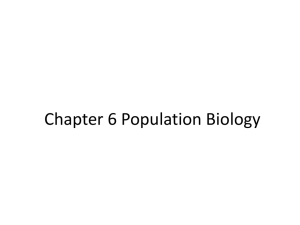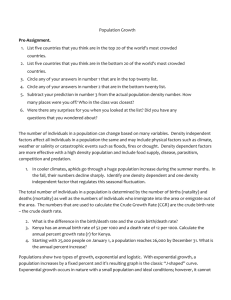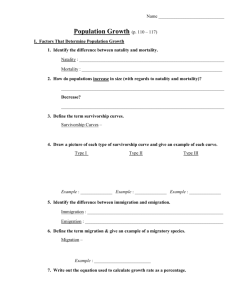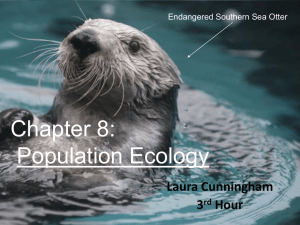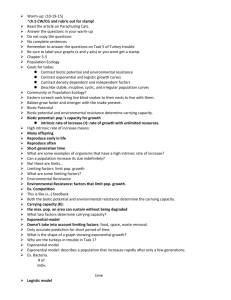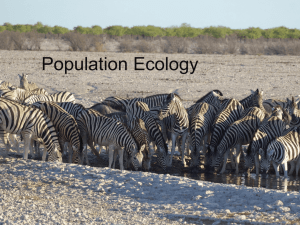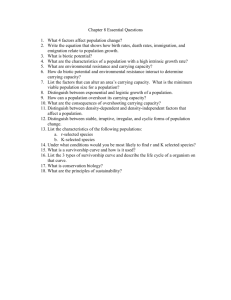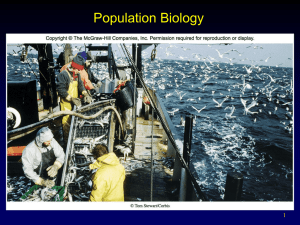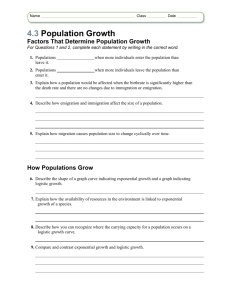Understanding Our Environment
advertisement
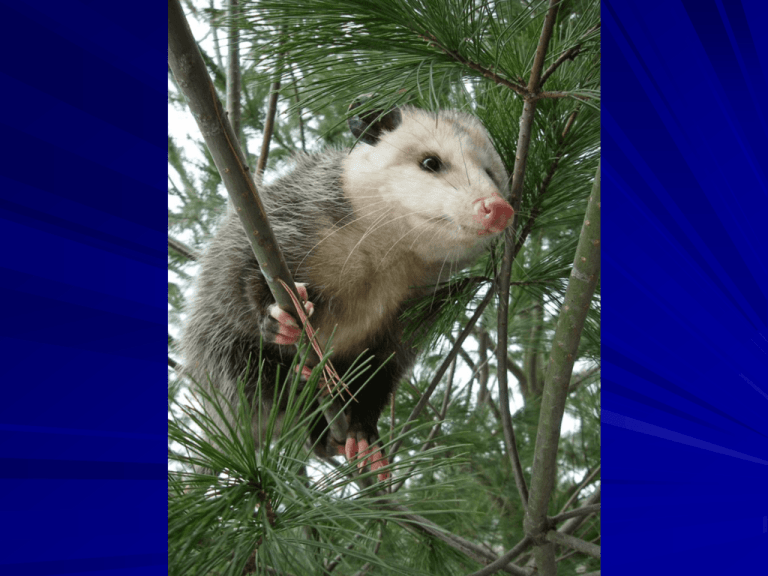
Are we over carrying capacity? Population density/consumption patterns Quality of life issues Impact on landscapes & resources Lake Chad What is “overpopulation”? how does it occur? 6 Outline Basic Dynamics of Population Growth – Exponential vs. Arithmetic Growth – Malthusian vs. Logistic Growth Complex Patterns of Population Change Regulating Population Growth – Density Dependence vs. Independence How do we apply possibilities to a specific case? DYNAMICS OF POPULATION GROWTH Exponential Growth - Growth at a constant rate of increase per unit time (Geometric) Arithmetic Growth - Growth at a constant amount per unit time (independent of base) Exponential Growth and Doubling Times Number of individuals added to a population at the beginning of exponential growth is relatively small. But numbers increase quickly as the reproductive base of the population grows. – J curve is the result of exponential growth Doubling Time of a population: – 70/annual percentage growth rate. Irruptive Growth Malthusian Growth (Irruptive) - Population explosions followed by population crashes. – Malthus concluded human populations tend to grow exponentially until they exhaust their resources and then crash. – Non-human examples are common, but may be influenced by predators or parasites, not just resources Irruptive population examples Malthusian Strategies Short life Rapid growth Early maturity Many small offspring Little parental care Little investment in individual offspring. Adapted to unstable environment. Pioneers, colonizers Niche generalists Prey Regulated mainly by extrinsic factors. Low trophic level Biotic Potential and Carrying Capacity Biotic Potential - Maximum reproductive rate of an organism (births minus deaths in optimal conditions). Carrying Capacity - Maximum number of individuals of any species that can be indefinitely supported Growth to a Stable Population Logistic Growth - Growth rates regulated by internal and external factors until coming into equilibrium with environmental resources. – Growth rate slows as population approaches carrying capacity. – S curve Environmental Resistance - Any environmental factor that reduces population growth. Logistic Strategies Long life Slower growth Late maturity Fewer large offspring High parental care and protection. High investment in individual offspring. Adapted to stable environment. Later stages of succession. Niche specialists Predators Regulated mainly by intrinsic factors. High trophic level Population Oscillations around Carrying Capacity Overshoot - Measure of extent to which population exceeds carrying capacity of its environment. Dieback - Negative growth curve. – Severity of dieback generally related to the extent of overshoot. FACTORS THAT ADD TO POPULATIONS Natality - Production of new individuals . – Fecundity - Physical ability to reproduce. – Fertility - Measure of actual number of offspring produced. Immigration - Organisms introduced into new ecosystems. LOSSES: Mortality and Emigration Mortality - Death Rate. – Survivorship - Percentage of cohort surviving to a certain age. – Life expectancy - Probable number of years of survival for an individual of a given age. Increases as humans age. – Life Span - Longest period of life reached by a given type of organism. Emigration - Movement of individuals out of a population. FACTORS THAT REGULATE ADDITIONS AND LOSSES Intrinsic factors - Operate within or between individual organisms in the same species. Extrinsic factors - Imposed from outside the population. Biotic factors - Caused by living organisms. Abiotic factors - Caused by non-living environmental components. Density-Independent Regulatory Factors Constant proportion of the population is affected regardless of population density. Tend to be abiotic components affecting mortality. The risk (per individual) is unrelated to the density of individuals (e.g, tsunami). Density-Dependent Factors Intensity changes as the population density changes. Tend to reduce population size by decreasing natality or increasing mortality. – Interspecific Interactions Predator-Prey oscillations – Intraspecific Interactions Territoriality – Stress and Crowding Stress-related diseases Given a long list of possible factors promoting growth, for a specific case, what leads to overpopulation or extinction? Identify most likely influences – (create a simplified “model”) Test the predictions of the model Example, what are the most likely influences on population levels of Whitetailed Deer in Knox County?
